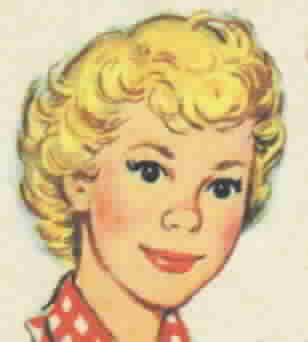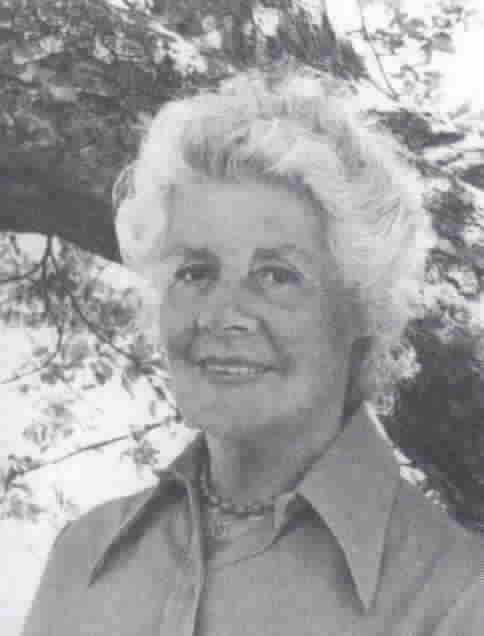 |
The Trixie Belden Series |
|
|
||
The Trixie Belden series was first published from 1948 to 1986 by the Western Publishing Company under the Whitman and Golden divisions. The series was out of print from 1986 until 2003, which is when Random House began reprinting the early volumes in the series. The Trixie Belden series was created by Julie Campbell Tatham. Tatham was born June 1, 1908, in Long Island, New York, and died in Alexandria, Virginia, on July 7, 1999. During the 1940s, the Tathams moved to a country place they named Wolf Hollow, located in the Hudson River Valley in Westchester County. Trixie's home, Crabapple Farm, is modeled after Wolf Hollow. During the late 1940s, Tatham took on a job handling unsolicited manuscripts for a friend who ran an artists' agency. This job soon resulted in Tatham running her own literary agency. This sequence of events led her to attend a meeting at the Western Publishing Company. In the meeting, the company discussed how to compete with the popular comic book market and suggested that the agents encourage writers to create fast-moving stories which could be published inexpensively by Whitman. After the meeting, Tatham sent a plot outline for the first Ginny Gordan mystery to Whitman. As a result, Tatham was contracted to write the Ginny Gordan and the Trixie Belden series. After writing the first six Trixie Belden books, Tatham wanted to quit, but Whitman wanted to continue the series. Whitman claimed to own the rights to the books, to which Tatham agreed but stated that she created and owned the rights to the characters in the series. Finally, Whitman agreed to publish six more Trixie Belden books for a flat fee, and later, Whitman gave Tatham a contract for the royalties. The series continued under the house name of Kathryn Kenny. |
 Julie Tatham |
|
|
|
||
|
The Premise Trixie Belden is 13 years old in the earliest books of the series and later has her 14th birthday. Trixie's age remains 14 for the remainder of the series. The first Trixie Belden books take place in real time, with the seasons changing naturally from summer to fall, winter, spring, and summer again. Trixie, her brothers Brian and Mart, her best friend Honey, Honey's adopted brother Jim, and friends Diana Lynch and Dan Mangan all attend school in Sleepyside-on-the-Hudson in the state of New York. The characters form a close-knit group and are truly the best of friends. They are all members of a club called the Bob-Whites of the Glen, and their motto is to help others whenever they can. Trixie manages to find mystery wherever she goes, and so the Bob-Whites find themselves devoting much of their time to helping Trixie solve mysteries or helping her out of various scrapes which come as a result of her overenthusiastic investigations. |
||
|
|
||
|
Nancy Versus Trixie
Trixie Belden is the antithesis of Nancy Drew, and in fact, Julie Tatham confessed to not liking the character of Nancy Drew. While Nancy Drew lives in a perfect world with plenty of money and frequently uses her father's name to get herself out of trouble, Trixie Belden lives in a world where she must do housework and other odd jobs to earn much-needed money and must rely only upon herself to get herself out of trouble. Trixie Belden also must face teasing from her brothers, who are often very obnoxious and think they know better than she does. Sometimes Trixie's brothers do know better than she does. Trixie even has trouble with math and must be tutored by her brothers during a vacation trip. Conversely, Nancy Drew never seems to have trouble with anything, and except in the earliest Nancy Drew books and in some of the more recent titles, Nancy Drew never makes mistakes.
Trixie and Nancy are two completely opposite characters, so it is not surprising that many people like Trixie better than Nancy and vice versa. The Trixie fans feel that Nancy is too perfect, while the Nancy fans prefer the exalted status of Nancy Drew. I am one of the exceptions as I read both series as a child and like both series equally, just for different reasons. I narrowly put Nancy Drew ahead of Trixie Belden on my list of favorite series only because I read the Nancy Drew books before I read the Trixie Belden books.
I loved reading Nancy Drew because she was everything that I could never be. I never had the level of self-confidence of Nancy Drew, so I greatly admired her. I was able to be that perfect person when I read Nancy Drew and was able to experience her wonderful adventures right along with her. To me, Nancy was a heroic figure and was everything that I wished I could be. How splendid that adults would listen to Nancy Drew and treat her like an equal! The Nancy Drew stories provide an outlet for any ordinary girl's fantasies.
I loved reading Trixie Belden because Trixie's realness goes beyond that of any other series character. All of the Bob-Whites' recreational activities were the type of fun activities that my family and any ordinary family would do. I could easily relate to Trixie's life on a farm since I lived in an area that was a mixture of both city and country. My mother loved to garden and can tomatoes, and so it was quite natural to read of Trixie helping her mother pick and can tomatoes. Additionally, I could relate to Trixie's problems and felt Trixie's fear when reading of her danger in life-threatening situations, such as the flood in The Happy Valley Mystery and her kidnapping in The Mystery on the Mississippi, which are the two instances that stand out the most in my memory.
|
||
|
|
||
Summaries
Summaries of #1-13
Summaries of #14-26
Summaries of #27-39
|
Cover Art Galleries
Cello Editions: 1954 to 1962
Cameo Edition Hardcovers: 1954 to 1964
Thin Hardcover Editions: early 1970s
Oval Paperback Editions: 1977 to 1984
Square Paperback Editions: 1984 to 1986 |
|
|
|
||
| Back to Main Page | ||